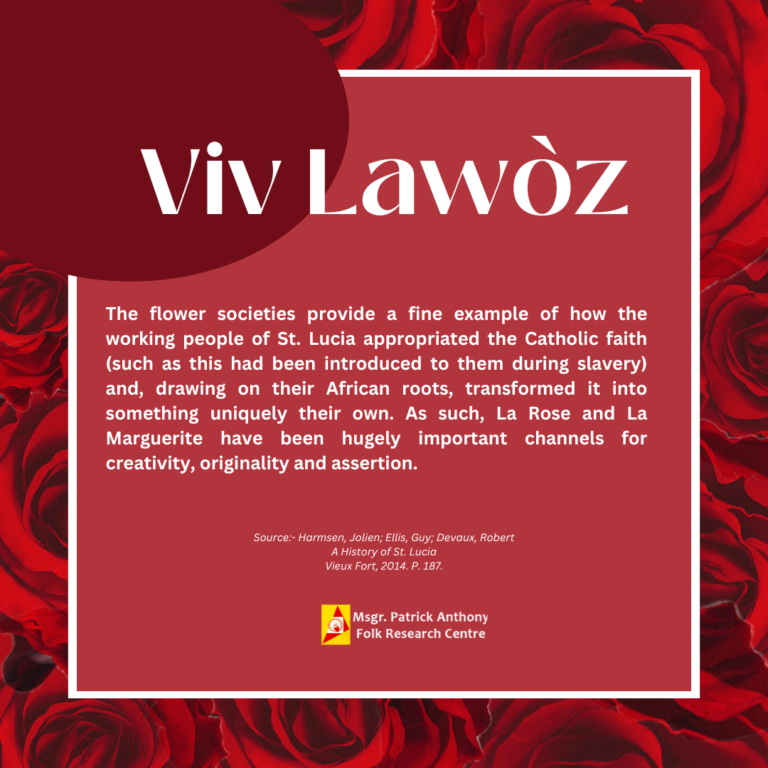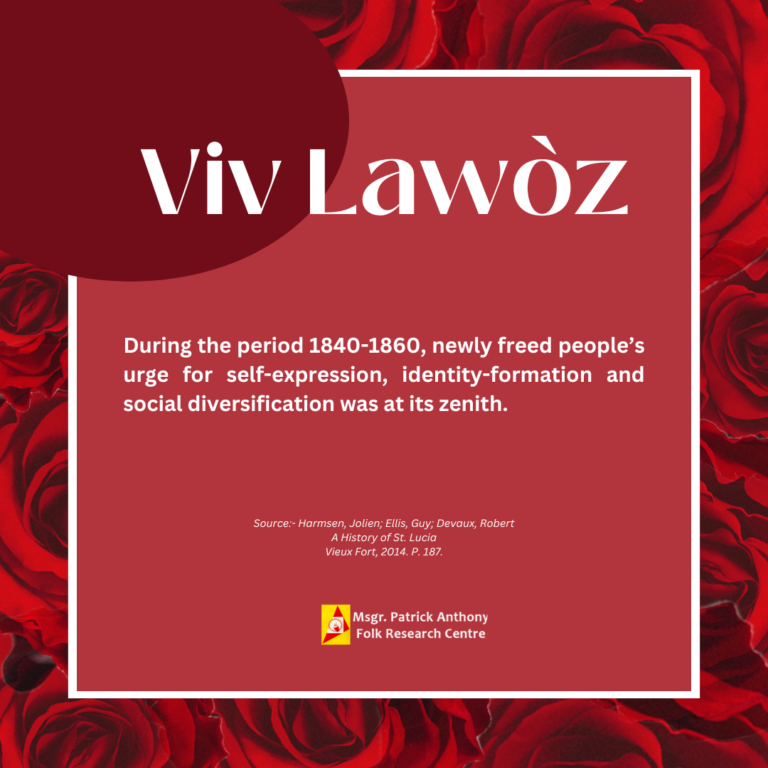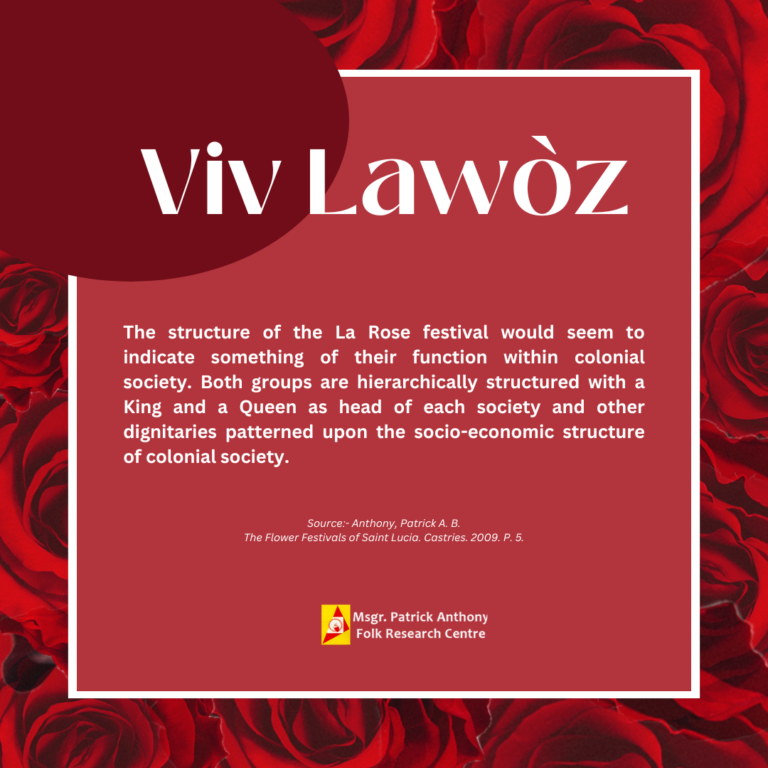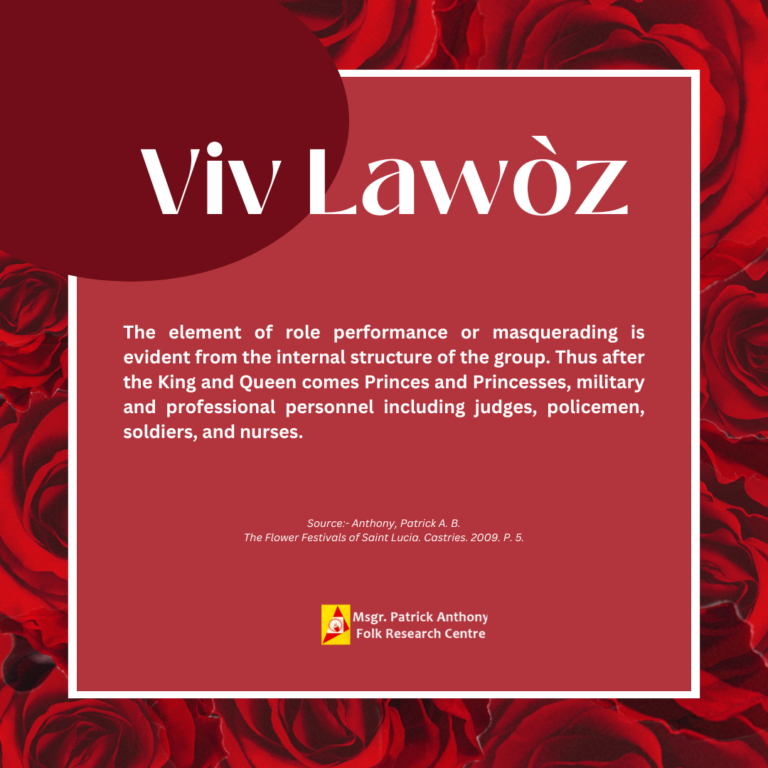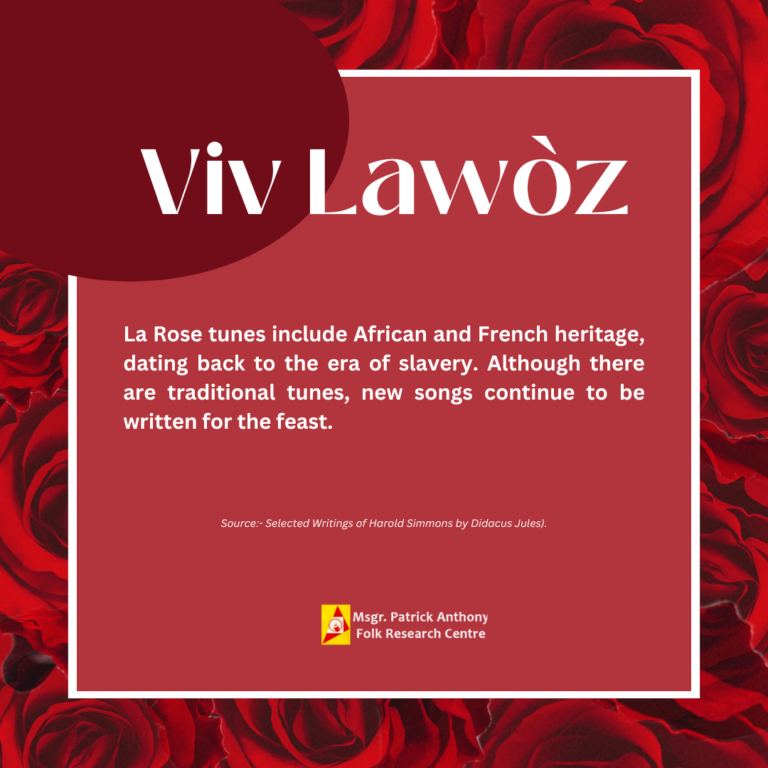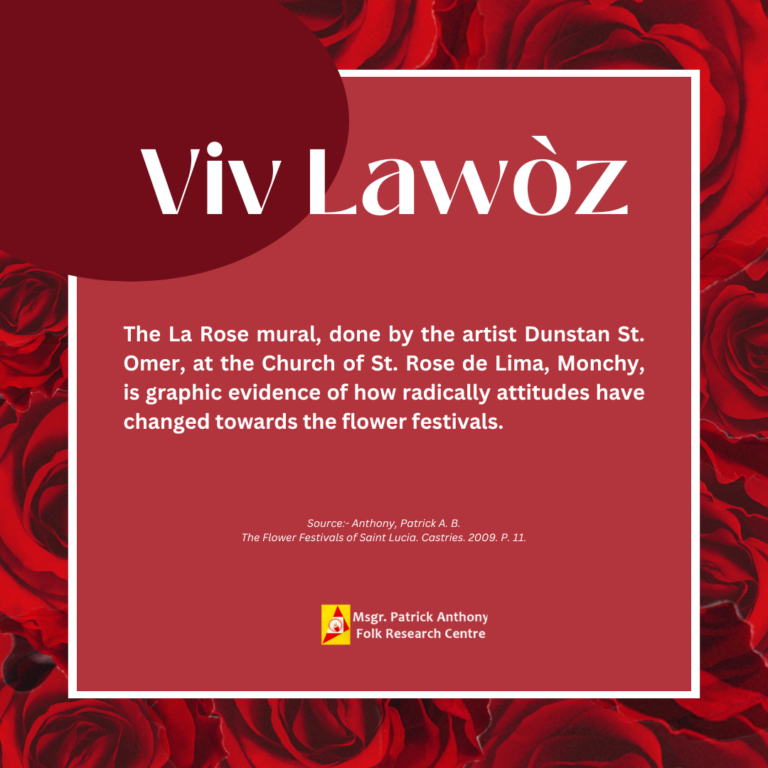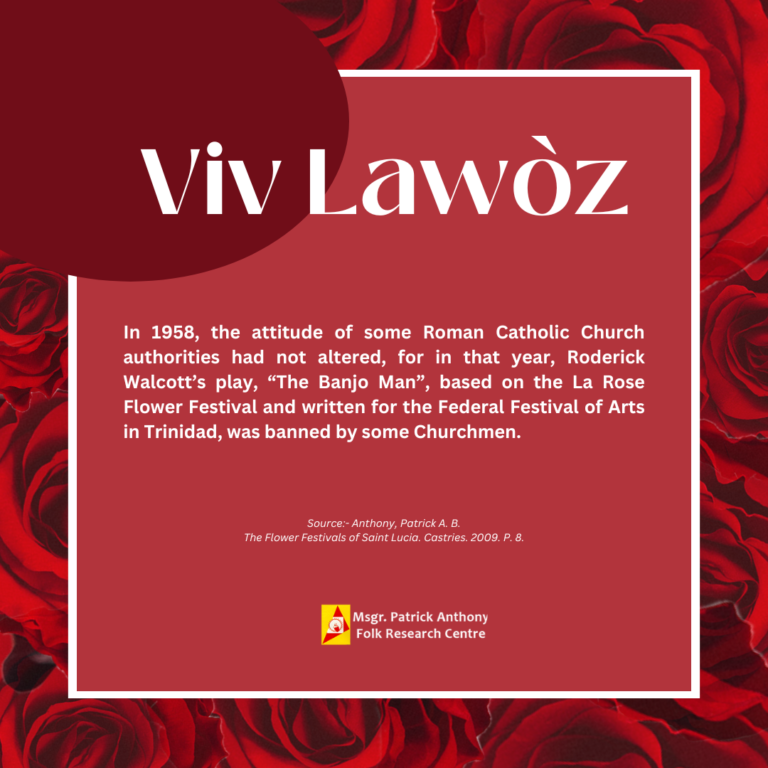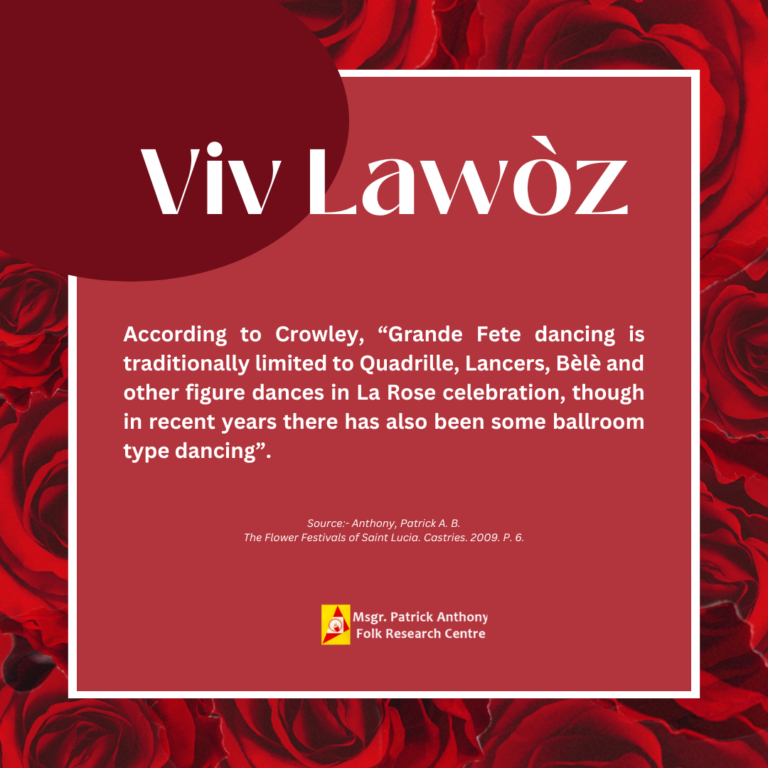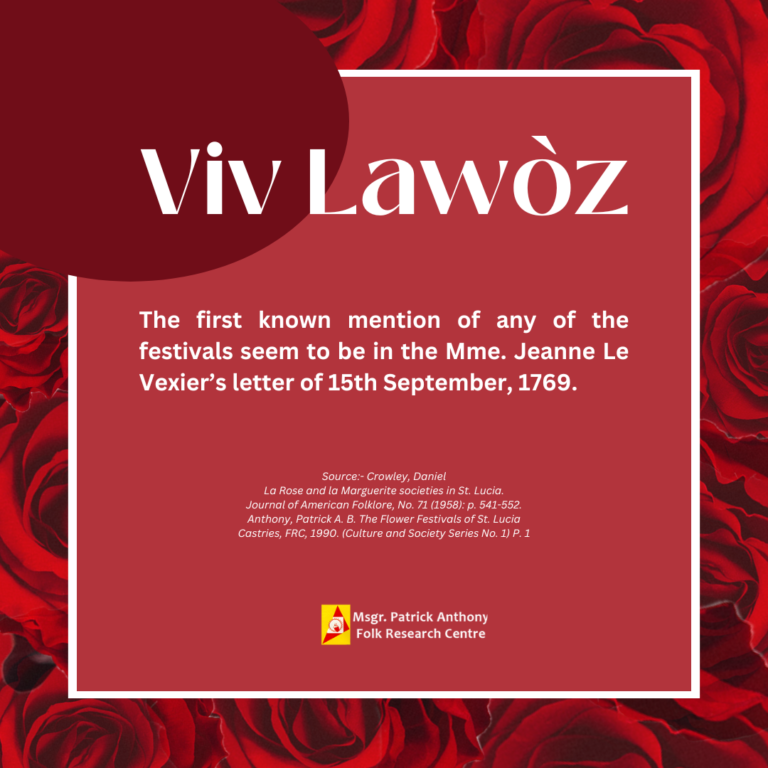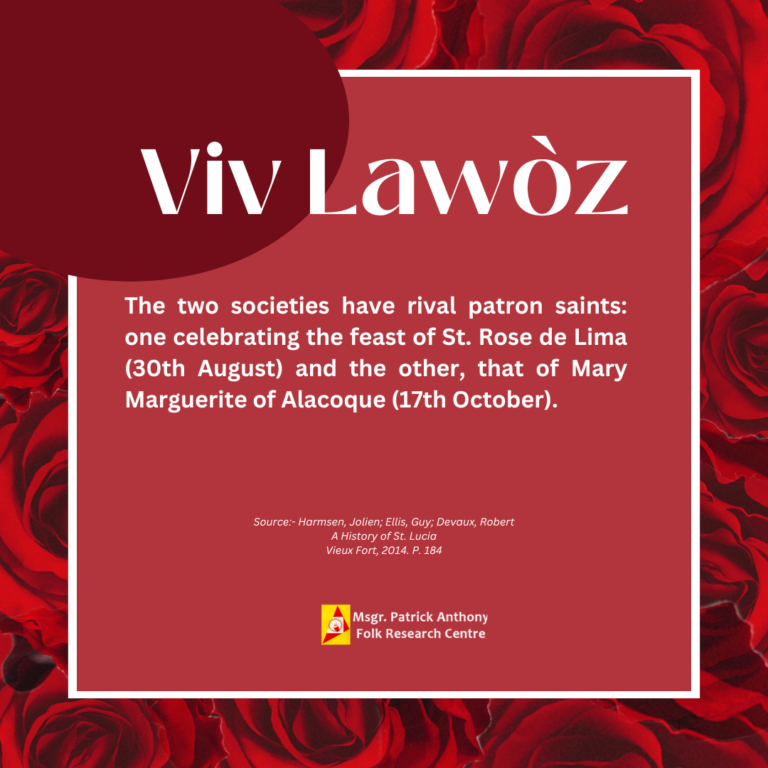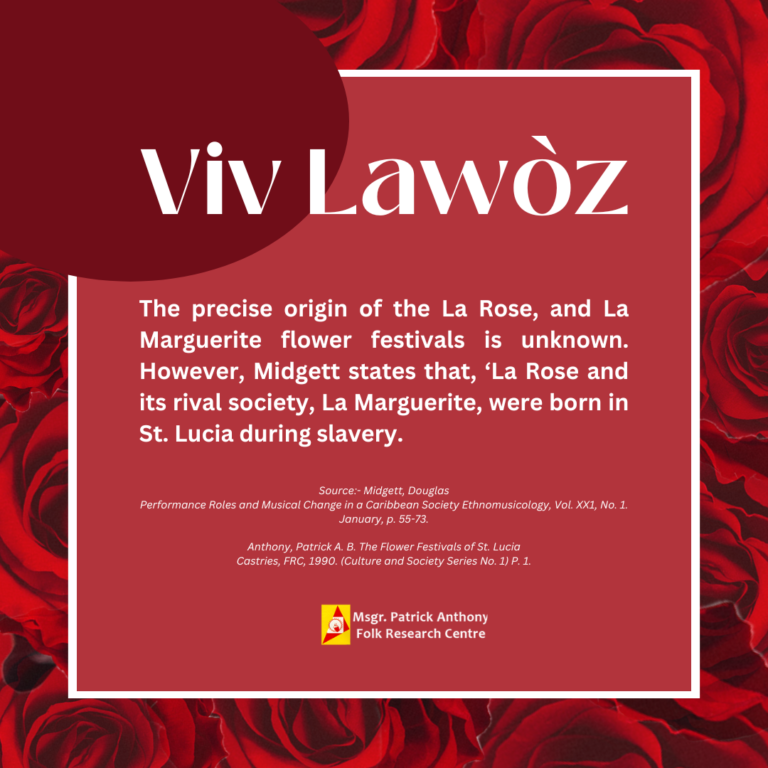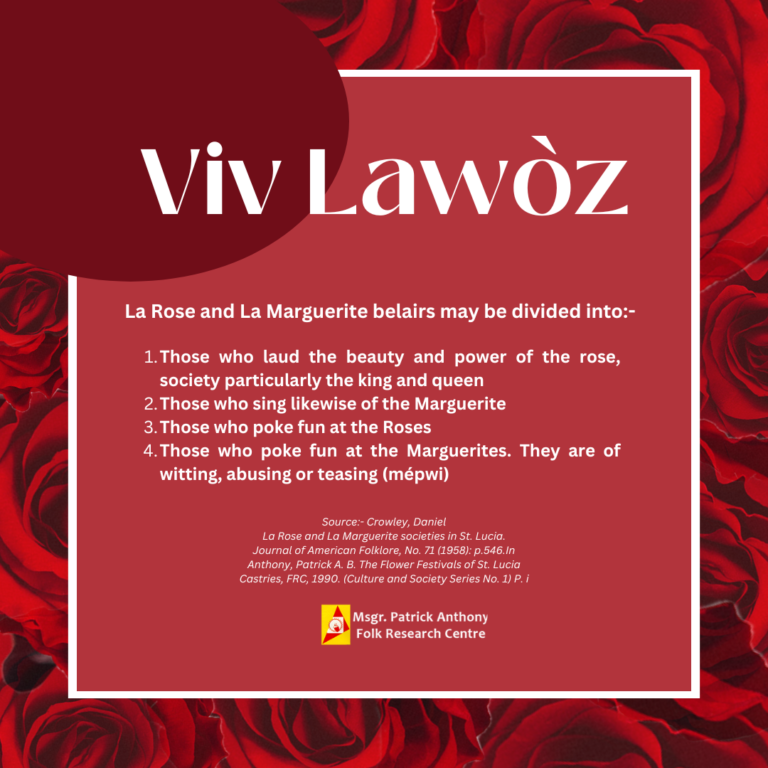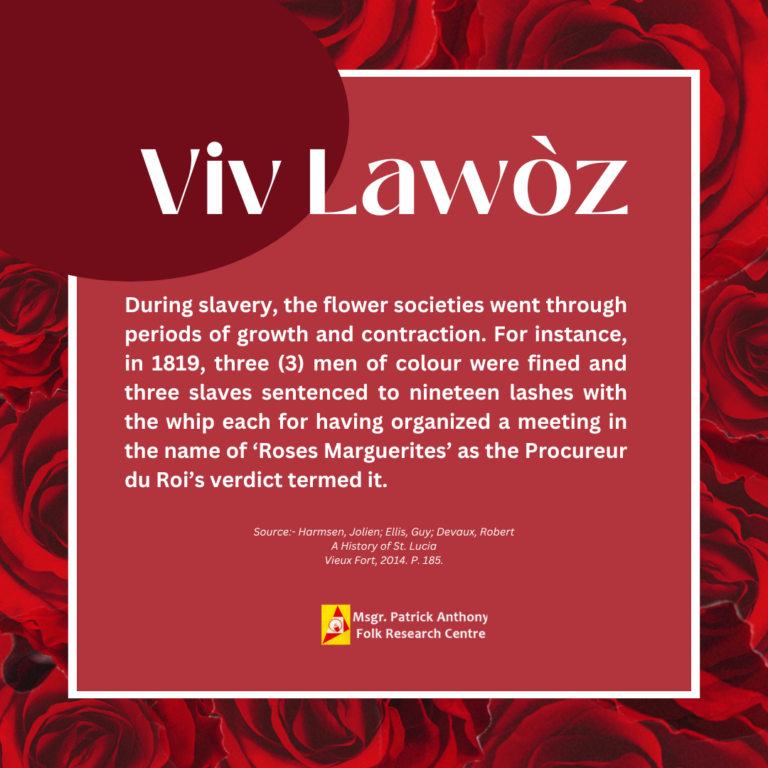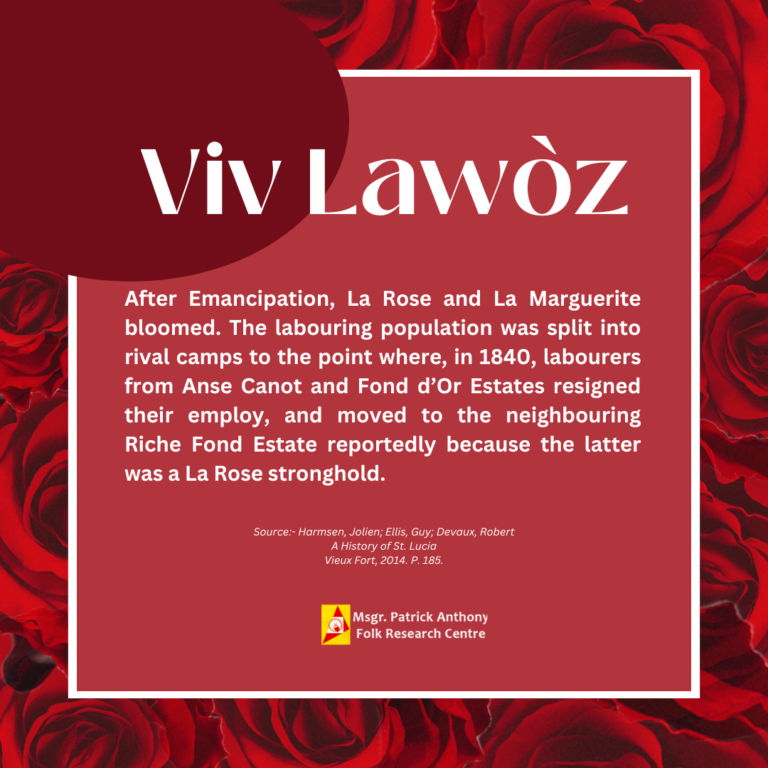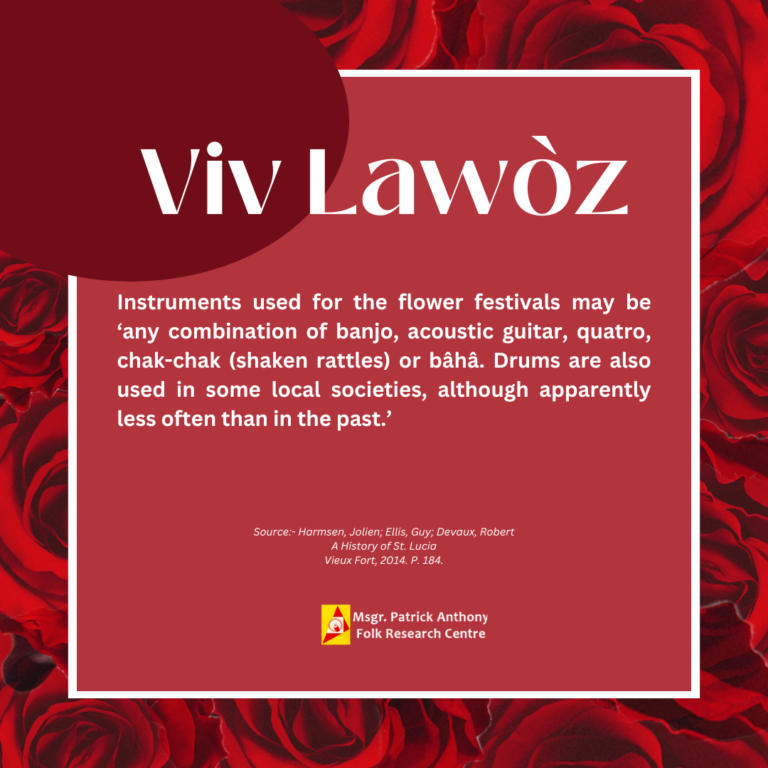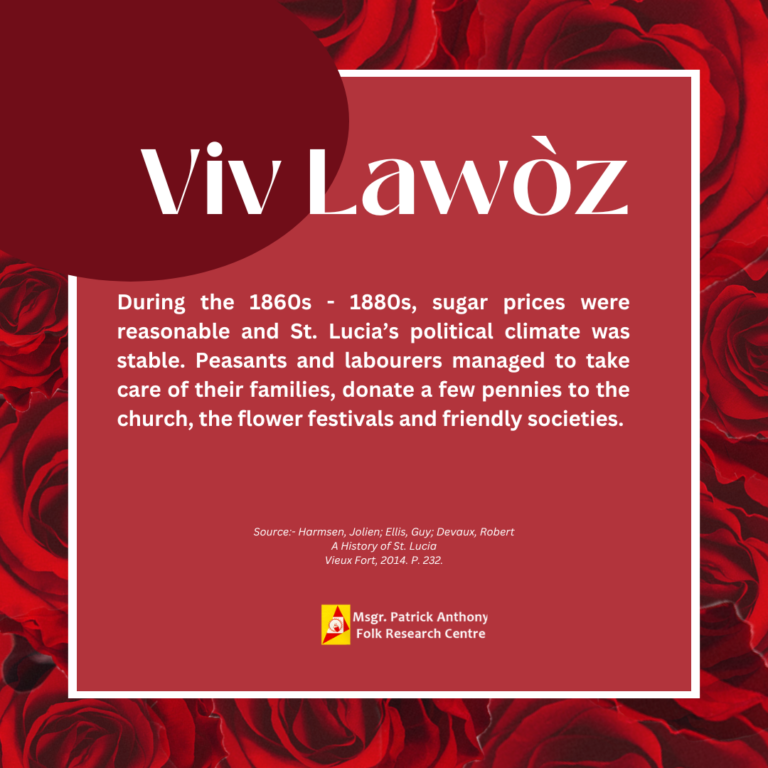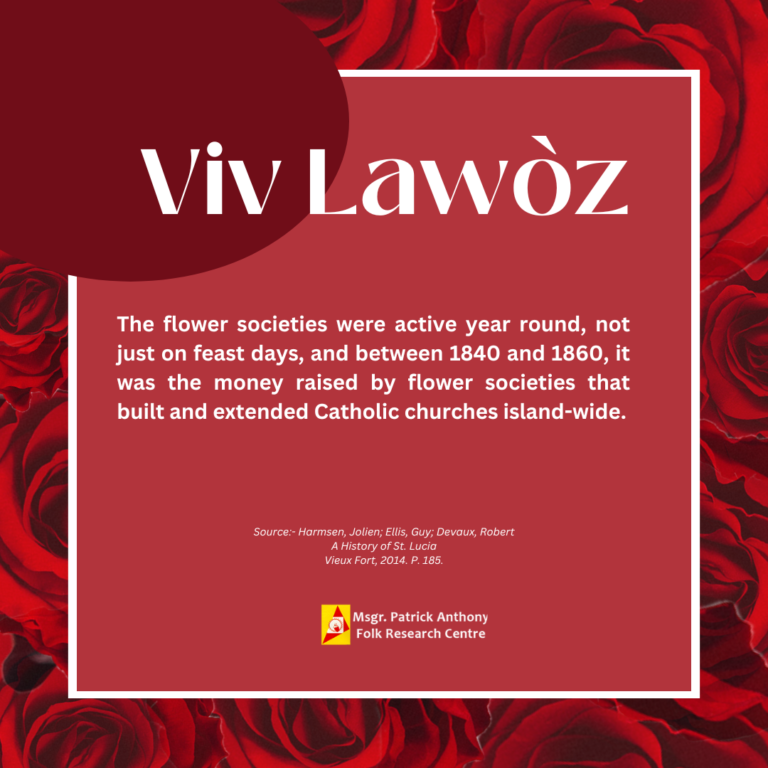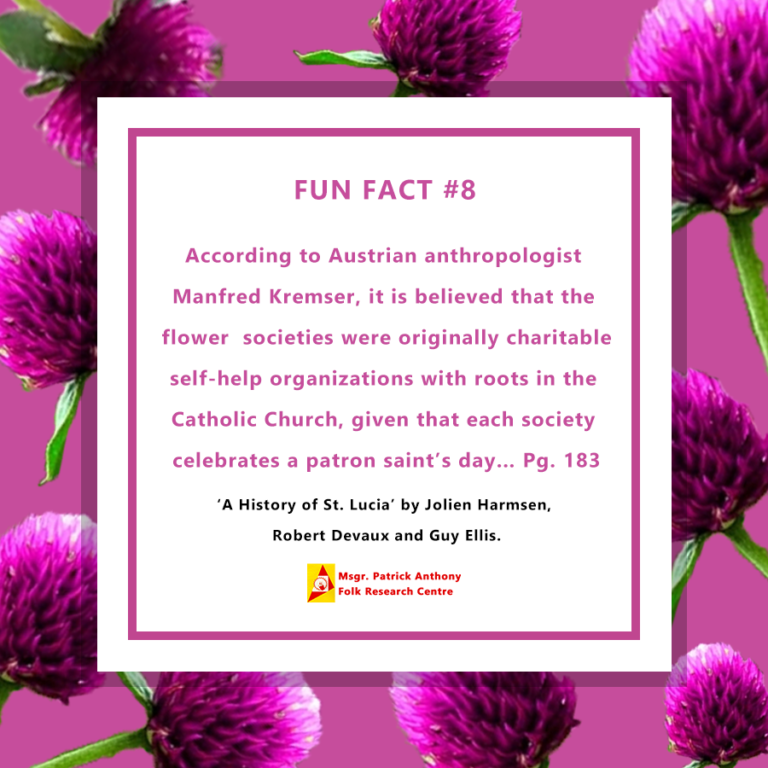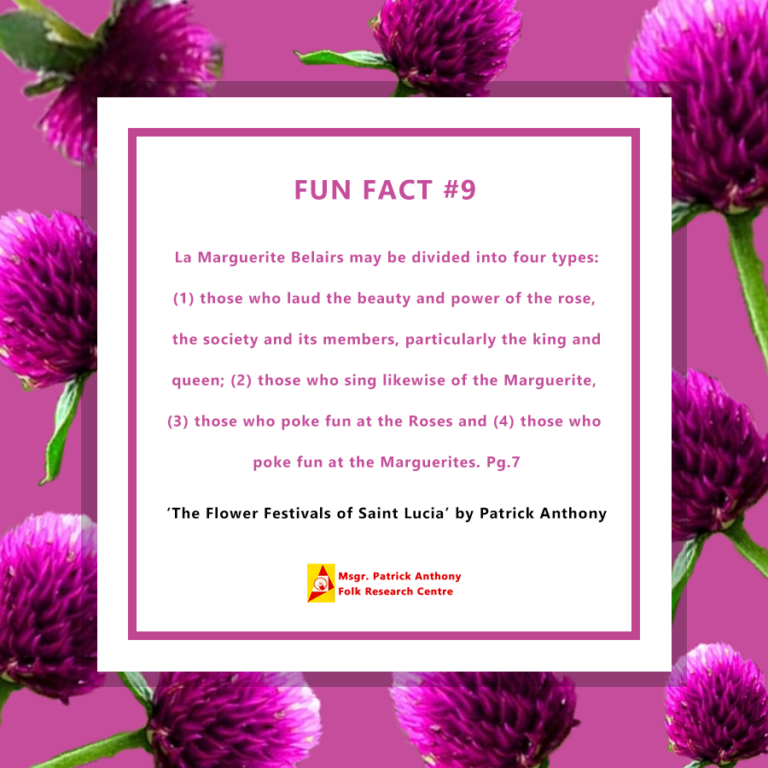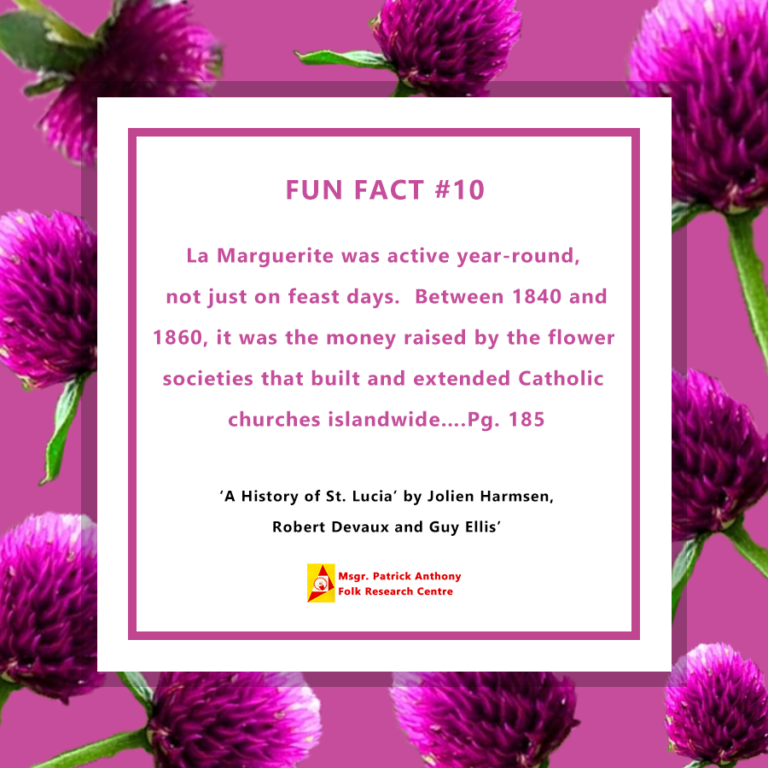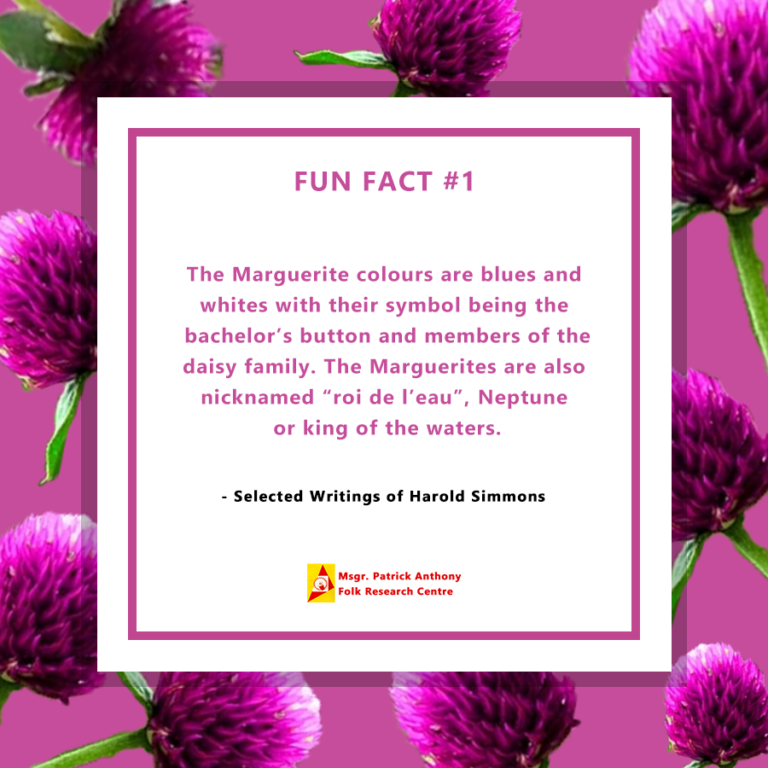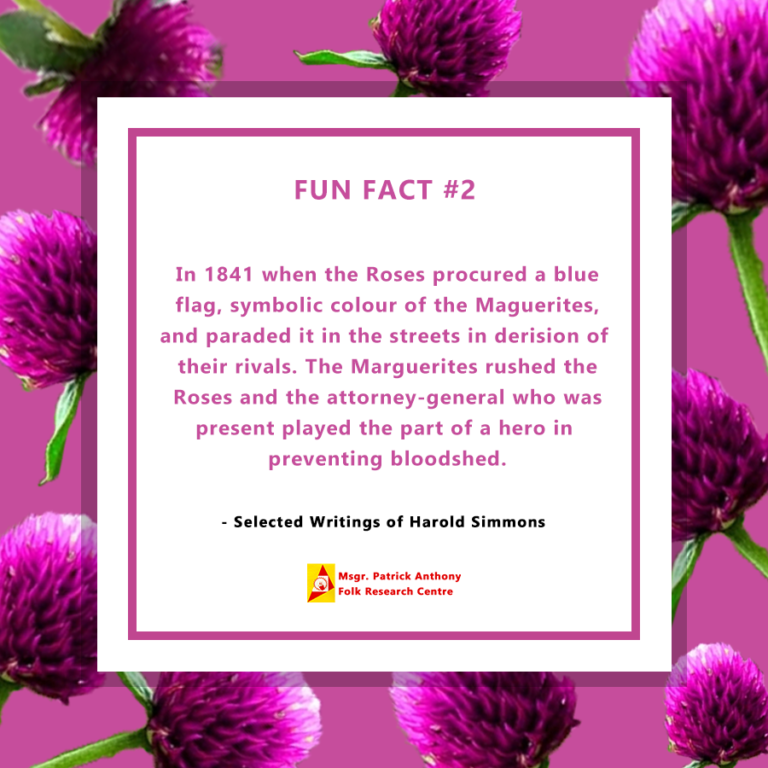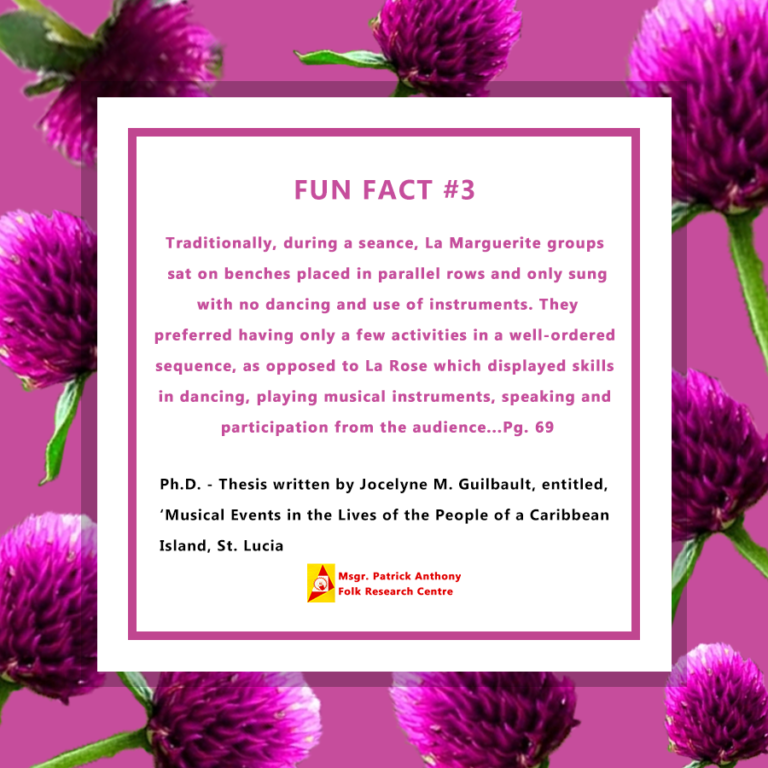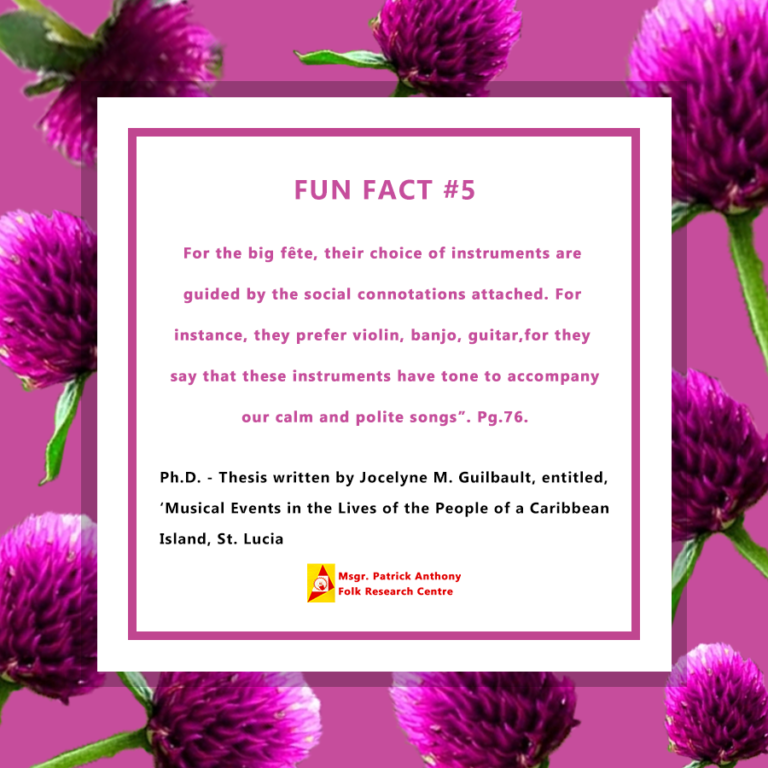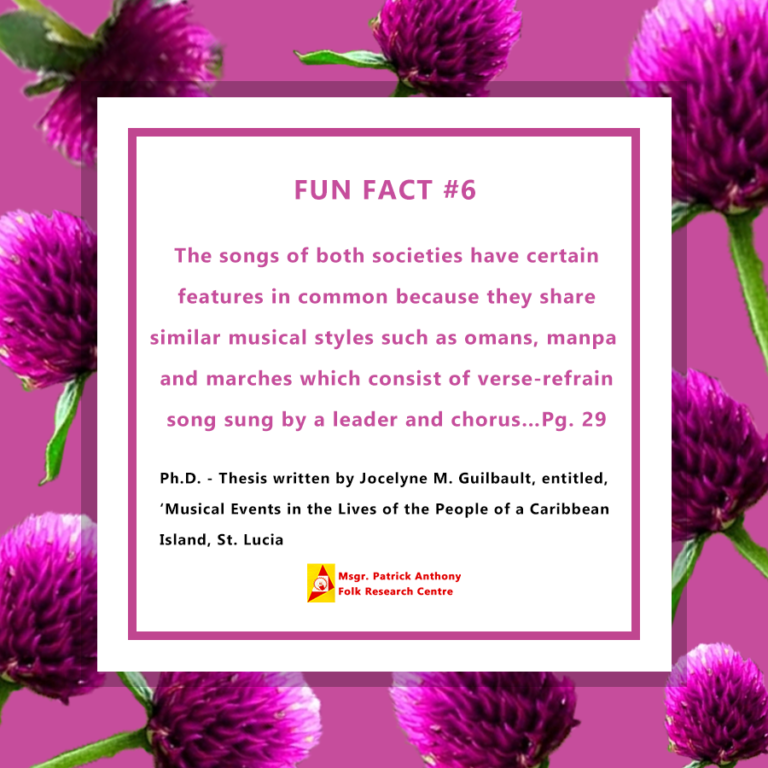FLOWER FESTIVALS
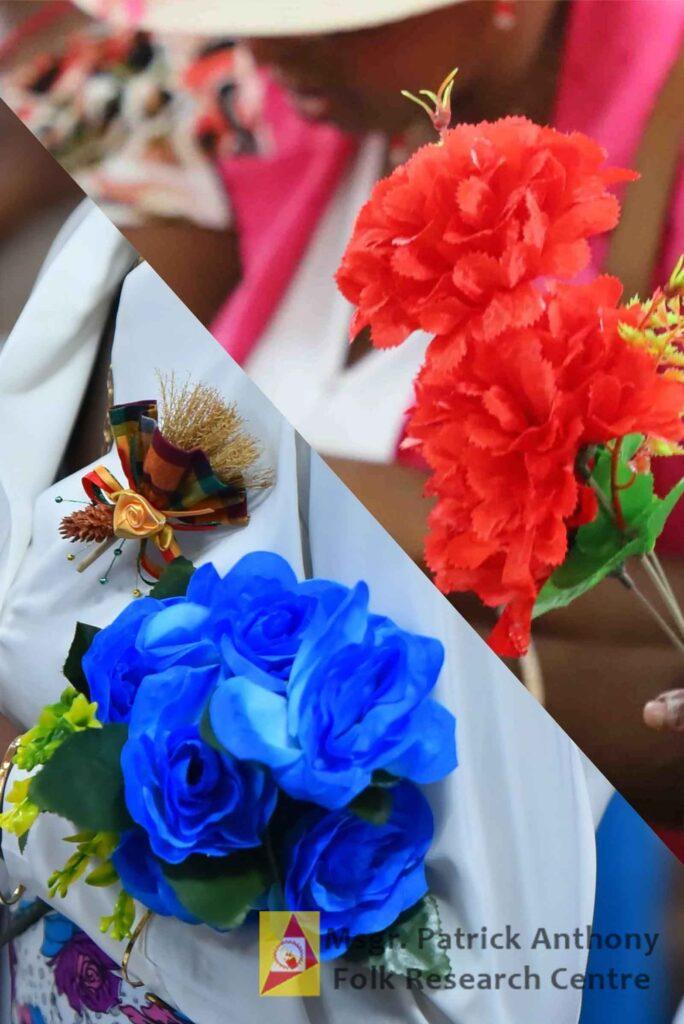
ORIGINS OF THE FLOWER FESTIVALS
The precise origins of the La Rose and the La Marguerite flower festivals are unknown. As Breen has aptly asserted “The history of the Antilles is involved in such total obscurity in all that concerns the black population that it would be impossible at the present time to trace the origins of the Roses and Marguerites” (1844:191). Midgett however states that “La Rose and its rival society La Marguerite, were born in St. Lucia during slavery…” (1977:56).
STRUCTURE
The Roses and the Marguerites are floral societies into which some members of the St. Lucian community divide themselves. Although these floral societies remain primarily singing associations today, there was a time when they formed “important segments of the island’s structure” and most persons in the community were somehow affiliated to one of the groups (Crowley 1958:541).
THE FESTIVALS
Preparations for the respective La Rose and La Marguerite festivals begin several months before the actual feast days, 30th August for the “Roses” and 17th October for the “Marguerites”. Each group would rent a hall (if it does not own one) and particularly on weekends hold “séances”. These consist of all-night singing and dancing sessions where drinks are sold and various games played (cf. Crowley 541). Most of the groups’ funds are raised in this manner. The central figure at the séances is the chantwèl or lead singer who sustains the spirit and tenor of the evening’s entertainment…
MUSIC
The song and dance types associated with La Rose and La Marguerite are many. There is much more variation and spontaneity at séances than at the Grande Fete when the significance of the occasion demands more disciple. At a séance one can witness anything from a “Mapa” (Simmons 1963:44; Crowley, 542) to a “Quibishe’, although the former, a kind of gwan won” is the most popular dance at séances. According to Crowley “Grande Fete dancing is traditionally limited to Quadrilles, Lancers, Belair, and other figure dances, though in recent years there has also been some ballroom type dancing” (542). Simmons lists among the dance types “Quadrille, Lancersm Polka, Muzurka and Schottishe” (1963:45).
For more details on The Flower Festival can be found in the publication entitled (The Flower Festivals of Saint Lucia). https://folkresearchcentre.org/books/the-flower-festival-of-saint-lucia/
FUN FACTS ON LA ROSE & LA MARGUERITE

